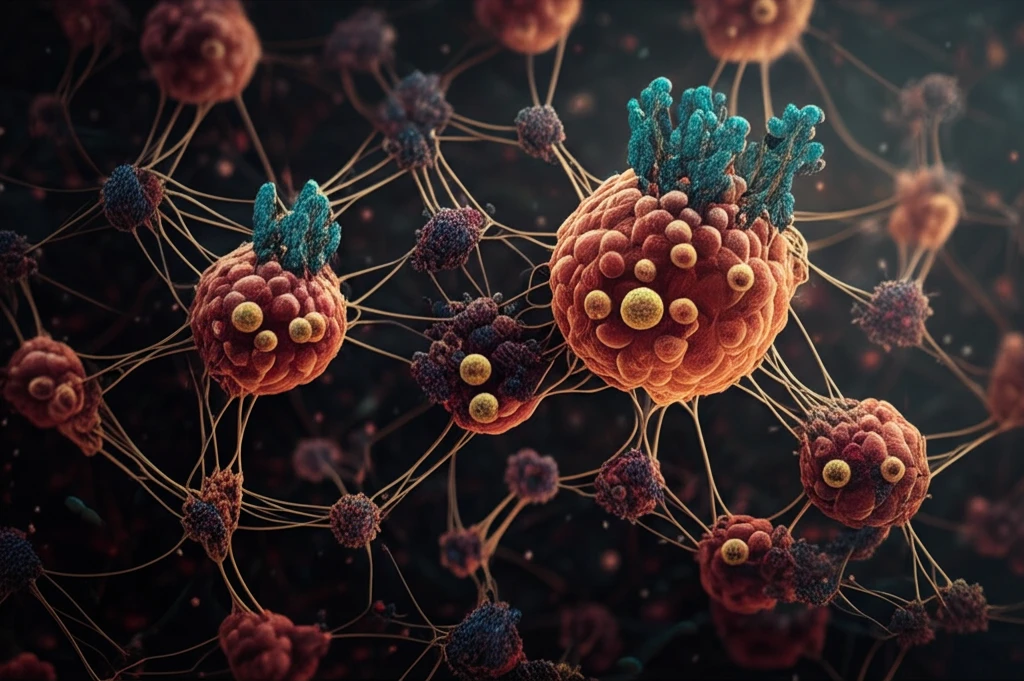
Unlocking the Mystery: How MMPs Could Revolutionize Ovarian Cancer Treatment
"Exploring the role of matrix metalloproteinases (MMPs) in ovarian cancer development and their potential as therapeutic targets."
Ovarian cancer is one of the most dangerous cancers affecting women. It’s often found late, making it hard to treat, especially when it spreads early. This has made it the deadliest gynecologic tumor, threatening many lives. Finding specific markers to detect ovarian cancer early and treat it effectively is crucial for improving patient outcomes.
Recent studies point to the significant role of matrix metalloproteinases (MMPs) in ovarian cancer. MMPs are a group of enzymes that break down proteins around cells, influencing how cancer develops and spreads. Researchers are exploring how these enzymes can be targeted to create new treatments.
This article dives into the recent findings about MMPs in ovarian cancer, explaining how they work and what they could mean for new therapies. By understanding MMPs, we can move closer to better treatments and improve survival rates for those affected by ovarian cancer.
What are MMPs and Why Do They Matter in Ovarian Cancer?

MMPs, or matrix metalloproteinases, are a family of enzymes that depend on calcium and contain zinc. These enzymes are crucial for breaking down the extracellular matrix (ECM), which includes proteins like collagen and elastin. The ECM supports cells and controls their behavior, but when MMPs break it down, it can lead to significant changes in how tumors grow and spread.
- Pro-peptide: Keeps the enzyme inactive until it’s needed.
- Catalytic Domain: Contains a zinc ion that helps break down proteins.
- Hydrophobic Signal Peptide: Guides the enzyme to the right location.
- Hemopexin-like C-Terminal Domain: Determines what proteins the enzyme can break down.
- Hinge Region: A flexible area containing prolines.
The Future of MMP Research in Ovarian Cancer
MMPs hold promise as biomarkers and therapeutic targets for ovarian cancer. Understanding their regulatory mechanisms could lead to significant advances in early diagnosis and treatment, ultimately improving survival rates and reducing mortality from this devastating disease. Ongoing research is essential to fully unlock the potential of MMPs in ovarian cancer management.
